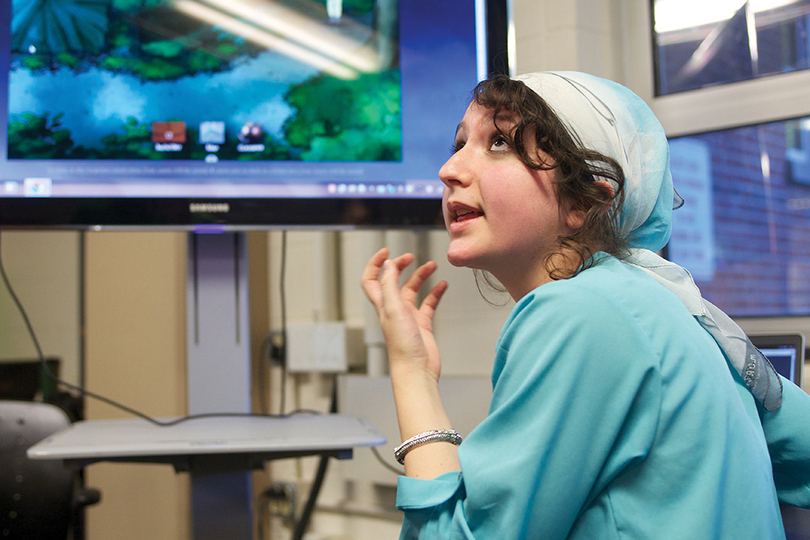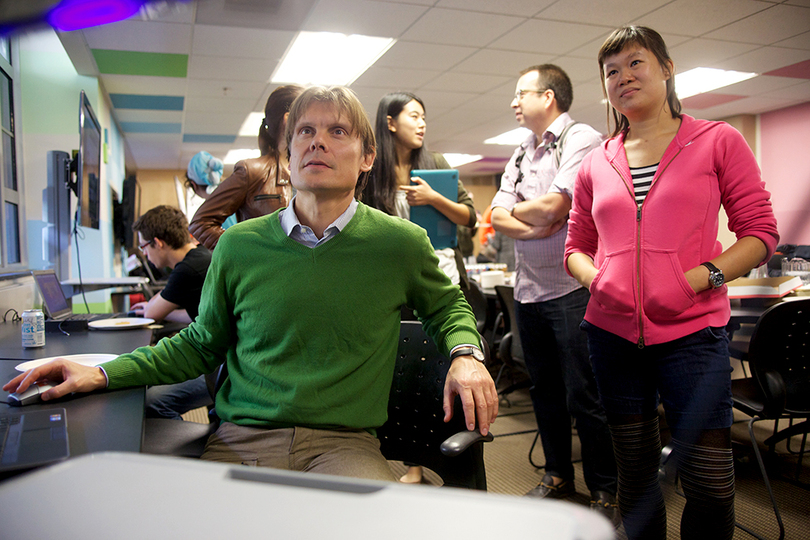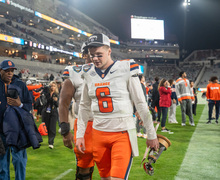All fun and games: Student-produced games provide scientific, stimulating educational outlet
Video games are generally considered to be simple entertainment at best. Some even call them mindless. But in some cases, a possibility arises allowing for actual player participation, leading to useful research.
One group behind creating such games is Citizen Sort, a group of student researchers, programmers, artists and others from the Syracuse University School of Information Studies who made it their goal to design computer games that would help with scientific research. On Monday, the group hosted an event in the Innovation Studio at Hinds Hall.
The group posted listings on SU Job Opps to recruit members from different backgrounds, and the students involved — undergraduate and graduate students alike — were paid for their efforts.
As the group’s name suggests, the games have people “sort” images by different criteria to then be analyzed by researchers.
“It’s not always that fun for people to just classify photos, so we designed a couple of video games to make that classification task more interesting and more fun,” said Nathan Prestopnik, a doctorate student at the iSchool and project manager for Citizen Sort.
At the event on Monday, students were able to show off their work: their website (CitizenSort.org); their “Happy Match” game, which deals with plants, animals and insects and is now available on their website; and “Forgotten Island,” a fantasy adventure game, which will be released Oct. 12.
“Happy Match” is a simple matching game that has players drag and drop photos of moths into different categories based on their wing shapes and patterns. Though limited to moths now, the developers said they would like to expand to cover multiple areas of research.
Dania Souid, marketing and communications manager for Citizen Sort and senior broadcast and digital journalism and French dual major, said she started reaching out to other scientists because the group needs their photos.
“We have new games coming out, one that’s sharks and rays, and then one from National Geographic,” she said.
“Forgotten Island” expands on the systems found in “Happy Match,” having players navigate a mysterious island and solve puzzles, all while earning money by performing the same picture classification tasks in the previous game.
The more traditional “game” elements of “Forgotten Island” made the game a more interesting project for the developers.
“It was a very good environment,” said Nathan Brown, one of the game’s artists and a junior computer art and animation major. “It didn’t feel like a job; it really felt like we were just a bunch of people who got together and made a game. Being paid was just a bonus.”
Stat-tracking features, allowing players to judge their skill and progress against their friends, back up both games. It’s free to create an account on the group’s site. Gamers who play will be helping scientific research, as well as the efforts of Citizen Sort. The group is also working on a game called “Hunt & Gather,” a photo-classifying game that’s set to be released this fall.
The scope of “Forgotten Island” is really impressive. The line art, character designs and coloring were all done by different artists, but it still feels like a cohesive fantasy world. The writing, particularly that of the robot character, is really funny. In one part the character says, “Don’t take that tone with me. I’ve already anticipated your lack of navigational awareness.” For novice players, the game is a bit lacking at teaching its controls, but that feature will likely be fixed by the time it gets released.
All of this from a game that’s intent is research work. It’s a great way to draw players into the game and make them legitimately interested in helping the project. Some players may prefer the simplicity of the game play of “Happy Match,” but most will probably find that “Island” holds their attention.
The group also plans to develop more games as it continues.
Said Prestopnik: “For the past year and a half … we went from not even knowing for sure what we were going to make, all the way up to having a real, concrete, finished set of stuff.”
Published on September 25, 2012 at 2:35 am
Contact Isaac: ikdavis@syr.edu







